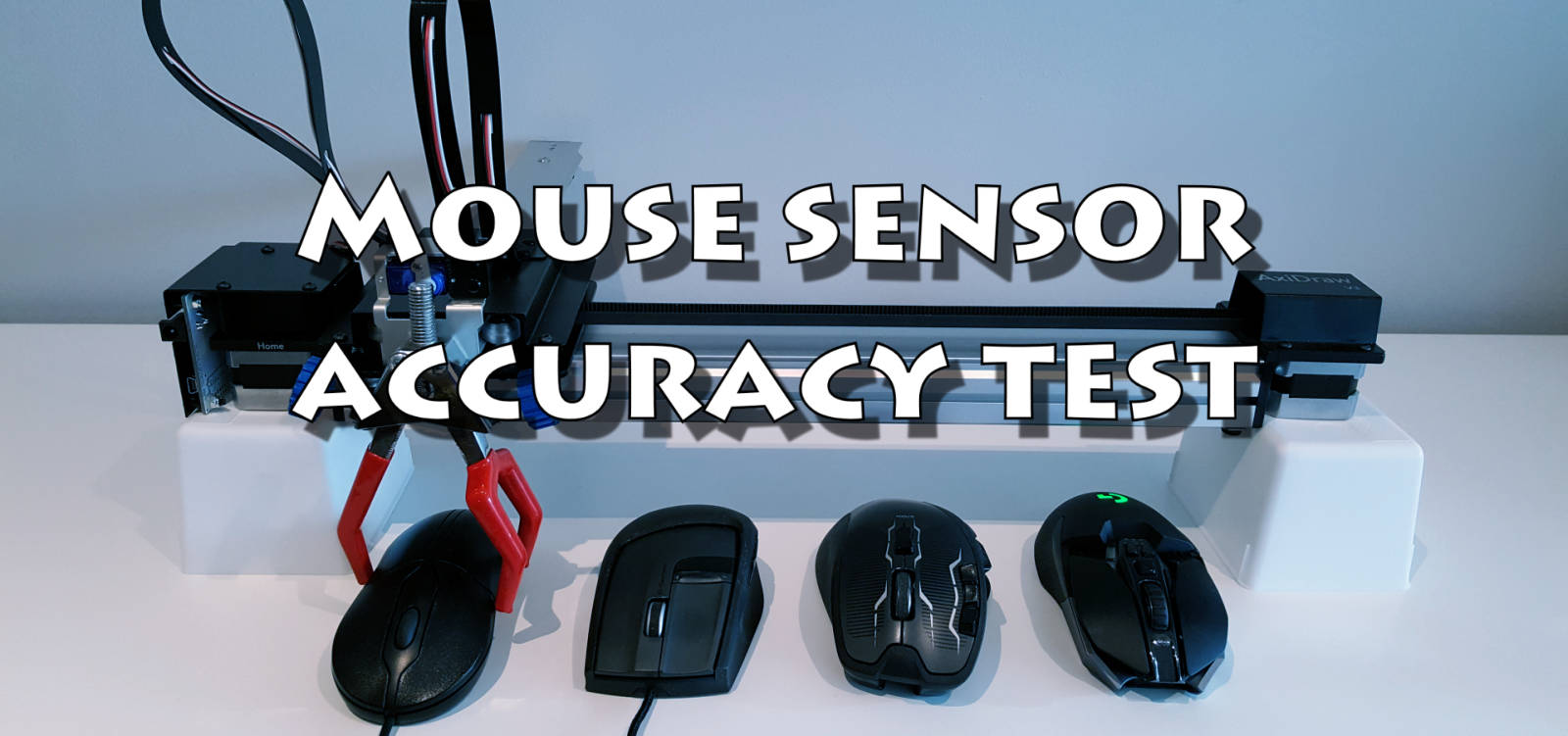Have you ever wondered how mouse sensors work? Whether you’re a gamer looking to improve your precision or a computer enthusiast wanting to understand the inner workings of your device, testing a mouse sensor can be a fascinating and valuable skill to have. In this guide, we will explore the essential steps and techniques to effectively test a mouse sensor, enabling you to troubleshoot issues, optimize performance, and gain a deeper understanding of this vital component in your computing experience.
A mouse sensor is the heart and soul of any pointing device, responsible for tracking movement and translating it into precise cursor control. Testing its functionality ensures that you can rely on accurate tracking, smooth responsiveness, and optimal performance. However, delving into the world of mouse sensor testing can be daunting without proper guidance. Fear not, as this comprehensive guide will walk you through the necessary steps, demystifying the process and empowering you with the knowledge needed to become a proficient tester. So, let’s embark on this journey together and discover the secrets behind the mouse sensor, unlocking the full potential of your beloved pointing device.
How to Test Mouse Sensor
- Step 1: Ensure the mouse is clean and free from any debris.
- Step 2: Place the mouse on a flat, non-reflective surface.
- Step 3: Open a text document or a drawing program on your computer.
- Step 4: Move the mouse around in different directions and check if the cursor movement is smooth and accurate.
- Step 5: Test the mouse sensitivity by adjusting the DPI settings if available.
- Step 6: Verify if all the buttons on the mouse are working correctly.
- Step 7: Test the mouse on different surfaces to check for any tracking issues.

How to Test Mouse Sensor: A Step-by-Step Guide
Are you experiencing issues with the performance of your mouse? Is it not moving smoothly or accurately? The problem could lie in the mouse sensor. In this article, we will guide you through the process of testing the mouse sensor to diagnose any potential issues. Follow these step-by-step instructions to ensure a thorough and accurate test.
Step 1: Clean the Mouse Sensor
The first step in testing the mouse sensor is to clean it. Dust, dirt, and debris can accumulate on the sensor over time, leading to inaccurate tracking. Use a microfiber cloth or cotton swab dipped in rubbing alcohol to gently clean the sensor. Be careful not to apply too much pressure or damage the sensor.
Once the sensor is clean, try using the mouse again to see if there is any improvement in its performance. If the issue persists, proceed to the next step.
Step 2: Check for Obstructions
Next, inspect the area where you use the mouse. Make sure there are no obstructions that could interfere with the sensor’s tracking. Remove any objects or clutter that may be blocking the mouse’s path. Additionally, ensure that the mouse pad or surface you are using is clean and free of any marks or scratches that could affect the sensor’s accuracy.
After clearing the area and ensuring a clean surface, test the mouse again to see if the issue has been resolved. If not, move on to the next step.
Step 3: Update Mouse Drivers
Outdated or incompatible mouse drivers can also cause sensor issues. Visit the manufacturer’s website or use the device manager in your operating system to check for any available driver updates. Download and install the latest drivers for your mouse model and restart your computer to apply the changes.
Once the drivers are updated, test the mouse again to see if the sensor problem persists. If it does, proceed to the next step.
Step 4: Test on Different Surfaces
Some mouse sensors are designed to work better on certain surfaces. Test your mouse on different types of surfaces such as a mouse pad, a wooden desk, or a glass table. See if the sensor performs differently on these surfaces and if the issue is specific to a particular type of surface.
If the sensor consistently performs poorly on all surfaces, it may indicate a hardware issue. In such cases, it is recommended to contact the manufacturer for further assistance or consider replacing the mouse.
Step 5: Adjust Mouse Settings
If none of the previous steps have resolved the sensor problem, try adjusting the mouse settings in your operating system. Access the mouse settings through the control panel or system preferences, depending on your operating system. Experiment with the sensitivity, acceleration, and other settings to find the optimal configuration for your mouse.
After making any adjustments, test the mouse again to see if the sensor issue has been resolved. If not, it may be necessary to seek professional help or consider replacing the mouse.
Step 6: Repeat the Test
If you have tried all the steps above and the mouse sensor issue persists, it is recommended to repeat the test on a different computer. This can help determine if the problem is specific to your computer or if it is a broader issue with the mouse itself.
If the mouse sensor performs poorly on another computer as well, it is likely a hardware issue. Contact the manufacturer for further assistance or explore options for a replacement.
Step 7: Seek Professional Help
If all else fails, it may be time to seek professional help. Contact the manufacturer’s support team or a qualified technician who specializes in mouse repairs. They will be able to diagnose the problem accurately and provide appropriate solutions.
Remember to provide them with detailed information about the steps you have already taken to test the mouse sensor. This will help them quickly identify the potential cause of the issue and provide the necessary assistance.
Step 8: Consider Replacement
If the mouse sensor cannot be fixed or the cost of repair outweighs the value of the mouse, it may be time to consider replacing it. Research and choose a mouse that meets your requirements and budget. Consider factors such as sensor type, DPI (dots per inch), ergonomics, and connectivity options before making a purchase.
Once you have a new mouse, repeat the test to ensure that the sensor performs accurately and meets your expectations.
Step 9: Maintain Regular Cleaning
To prevent future sensor issues, it is important to maintain regular cleaning of the mouse sensor. Make it a habit to clean the sensor every few months or as needed. This will help maintain optimal performance and prolong the lifespan of your mouse.
Refer to the manufacturer’s guidelines for specific cleaning instructions and avoid using abrasive materials or harsh chemicals that could damage the sensor.
Step 10: Stay Informed
Stay informed about the latest developments in mouse sensor technology and troubleshooting techniques. Follow reputable technology websites, forums, and blogs to keep up-to-date with the latest tips and tricks for testing and maintaining mouse sensors.
By staying informed, you will be better equipped to troubleshoot any future sensor issues and ensure the optimal performance of your mouse.
Frequently Asked Questions
Below are some frequently asked questions about how to test a mouse sensor:
Q: How can I test the accuracy of my mouse sensor?
To test the accuracy of your mouse sensor, you can use various online tools that provide mouse accuracy tests. These tests usually involve tracking your mouse movement and measuring how accurately it follows your cursor. Additionally, you can also perform real-life tests by using your mouse on different surfaces and observing if there are any discrepancies between the cursor movement and your actual mouse movement.
Another way to test the accuracy is by checking the DPI (dots per inch) settings of your mouse. Higher DPI settings generally result in more accurate cursor movement. You can adjust the DPI settings and test how accurately the mouse responds to your movements at different sensitivity levels.
Q: Can I test the sensitivity of my mouse sensor?
Yes, you can test the sensitivity of your mouse sensor. One way to do this is by adjusting the DPI settings of your mouse. DPI refers to the sensitivity of the mouse sensor and determines how much the cursor moves in relation to the physical movements of the mouse.
To test the sensitivity, you can try different DPI settings and observe how the cursor responds to your movements. A higher DPI setting will result in a more sensitive cursor, while a lower DPI setting will make the cursor less sensitive. By testing different sensitivity levels, you can find the right balance that suits your needs and preferences.
Q: How can I test the responsiveness of my mouse sensor?
To test the responsiveness of your mouse sensor, you can perform simple tests like dragging and dropping files or objects on your computer screen. Pay attention to how quickly the cursor moves when you move the mouse and how accurately it responds to your commands.
You can also test the responsiveness by playing video games or using software that requires precise mouse movements. If the cursor lags or doesn’t respond accurately to your movements, it may indicate a problem with the mouse sensor or its connection. In such cases, you may need to troubleshoot the issue or consider replacing the mouse.
Q: Are there any software tools available to test mouse sensors?
Yes, there are several software tools available that can help you test your mouse sensor. One popular option is MouseTester, which provides various tests to evaluate the performance of your mouse sensor. It allows you to test button clicks, scroll wheels, and mouse movement accuracy.
Another commonly used software is the Mouse Accuracy Test, which focuses on testing the accuracy and precision of your mouse sensor. It measures your mouse movements and provides a score based on your performance. These software tools can be downloaded and used on your computer to assess the functionality of your mouse sensor.
Q: Can I test my mouse sensor on different surfaces?
Yes, you can test your mouse sensor on different surfaces to assess its performance. The mouse sensor may respond differently depending on the type of surface it is used on.
Try using your mouse on a variety of surfaces such as a mouse pad, a wooden desk, a glass surface, or a textured fabric. Observe how well the cursor tracks your movements on each surface and if there are any inconsistencies or difficulties in movement. This will give you an idea of how well the mouse sensor performs in different scenarios and help you choose the right surface for optimal performance.
Mouse sensor test @rocket jump ninja
In conclusion, testing the mouse sensor is an essential step in ensuring optimal performance and accuracy. By following the step-by-step guide outlined in this article, you can effectively troubleshoot any issues and identify potential problems with your mouse sensor. Remember to consider factors such as surface compatibility, DPI settings, and firmware updates to obtain the most accurate results.
By regularly testing your mouse sensor, you can enhance your overall gaming or computing experience. A well-functioning sensor allows for seamless movement, precise tracking, and improved responsiveness, ultimately leading to better productivity and performance. So, don’t overlook the importance of testing your mouse sensor and take the necessary steps to maintain its functionality for a smooth and enjoyable user experience.

